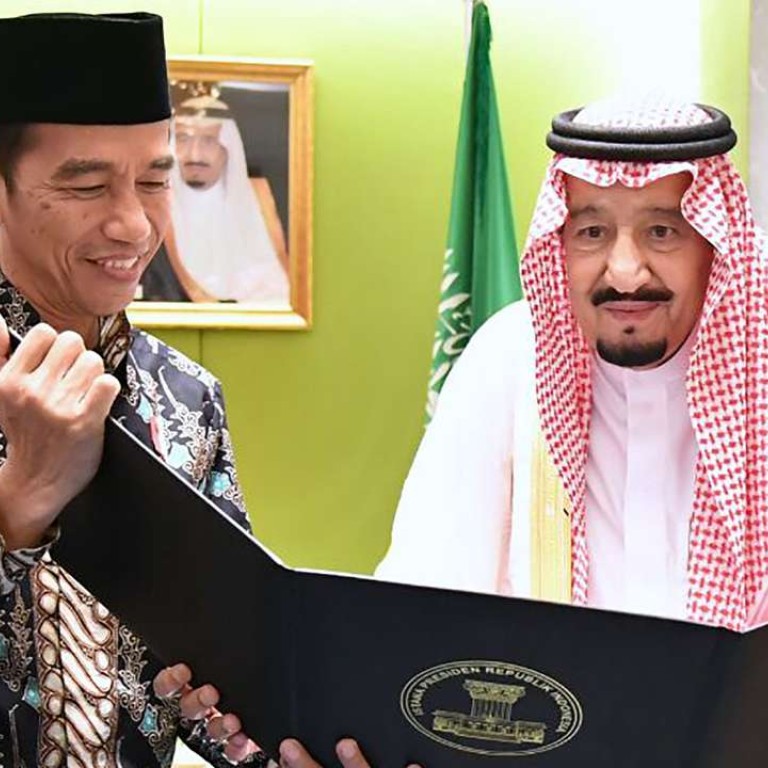
What King Salman’s grand tour of Asia says about Saudi Arabia’s new priorities
The first tour through Asia in half a century by a Saudi monarch has significance that we would do well to take careful note of
The six week triumphal progress of Saudi Arabia’s King Salman bin Abdulaziz Al Saud through Asia, to my best knowledge unparalleled in modern times, may seem just quaint – but it is much more. My sense is that this first tour through Asia in half a century by a Saudi monarch has significance that we would do well to take careful note of.
As the King takes a balmy eight day pause in his six country itinerary in the high-security privacy of resort hotels in Bali, it is perhaps timely to take stock.
It is easy to start – and finish – with bemused astonishment at the grand excess of it all. A 1,500-strong entourage that includes 25 Saudi princes, 10 ministers, around 700 people in his personal entourage and a business delegation of around 800 is mind-boggling enough.
Over 500 tonnes of baggage – as egregious an “excess baggage” load as I can ever recall, equivalent to about 240 elephants – is being carried in a total of 26 aircraft, and includes two bespoke stretched Mercedes and two lifts to get on and off planes, and tonnes of halal food. Even King Henry Tudor could not have matched this on his triumphal tours of his British kingdom back in the 1540s.

Spearheading this transformation and providing its “thought leadership” are his nephew, crown prince Muhammed bin Nayef (a spritely 57-year-old), and King Salman’s 32-year-old son Mohammed bin Salman, who is deputy crown prince – all potentially confusing in a country that boasts a royal family of around 15,000 and over a thousand princes.
It is only rarely in the past that Saudi’s rulers have ventured outside their kingdom on this kind of scale. It began in Malaysia on February 26, followed by Jakarta and Brunei. The entourage have over the past week been taking a private pause behind the high security walls of at least five resort hotels in Bali. Work resumes today in Japan, and moves to Beijing on Wednesday before a transit through the Maldives on the way home.
The choice of destinations speaks volumes about Saudi Arabia’s aims and priorities – including a weakening of confidence in a Trump-led US as its primary international ally. Malaysia, Indonesia and Brunei – as Asia’s most important majority-Muslim countries – are important Sunni allies in the ongoing battle with Iranian-led Shiites, as well as long-standing trade and investment partners. China and Japan are not only among Saudi’s most important oil and natural gas export markets, but critically important sources of future investment as the country arm-wrestles itself away from its extreme reliance on oil and gas.

For King Salman, the tour through Asia’s Islamic nations is a grand opportunity to remind of the magnificent opulence of the 200-year old House of Saud kingdom, and of the country’s iconic importance as the home of Islam, and champion of the ultra-conservative Salafii-Wahhabi branch of Islam. In recent decades, Saudi Arabians have funded hundreds of mosques in Indonesia, hundreds of “madrassas” providing classic Islamic education, numerous Arabic language institutes, and a free university in Jakarta.
Indonesia also holds the largest quota worldwide of permits to join the hajj pilgrimages to Mecca and Medina – 221,000 a year – and is pressing for an even larger quota.
But in contrast with its ultra-conservative positioning on Islam, and its rising belligerence against militant Shiite Islam, which led to the execution of the radical Shia cleric Nimr-al-Nimr early last year, and the invasion of Yemen against Shiite Houthi rebels, Saudi Arabia has begun a process of quite radical economic liberalisation – all being championed by the king’s son, Mohammed bin Salman.
A key driver for this shift has been the crash in global oil prices in the past decade, and the unlikelihood of any early return to the opulent days when a barrel of oil was worth upwards from US$100 a barrel. With oil at US$30 a barrel, Saudi’s budget deficit soared to US$98 billion in 2015, and even last year amounted to US$79 billion. GDP growth has slumped to 1.4 per cent a year, compared with an average over the past 10 years of around 4 per cent, and unemployment jumped to 12 per cent.
Among urgent measures to shore up the economy, the government borrowed US$17.5 billion in the global capital markets, and laid out plans to float its oil giant, Saudi Aramco (this will probably happen next year). Ministries have had their budgets cut by about 25 per cent, and 200 infrastructure projects are under review, with spending cuts of around US$20 billion. A National Transformation Plan was forged by the king’s son, including a Vision 2030 plan to dilute the economy’s reliance on oil.
King Salman’s Grand Asia Progress is a key part of cementing that plan – seeking inward investment from Japan and China in particular. A decade ago, the tour would probably have been to Europe and the US, but now Asia is a more sensible destination. How the world’s balance of economic power is being altered.
David Dodwell researches and writes about global, regional and Hong Kong challenges from a Hong Kong point of view

